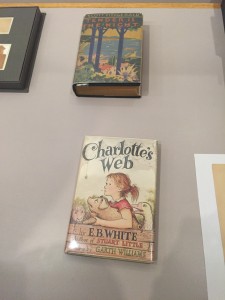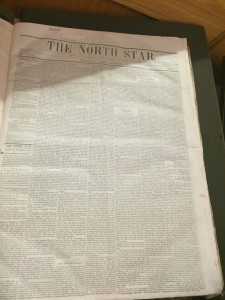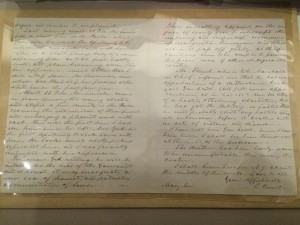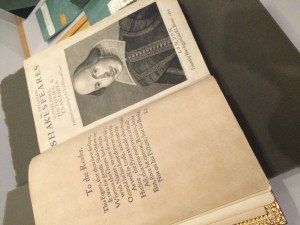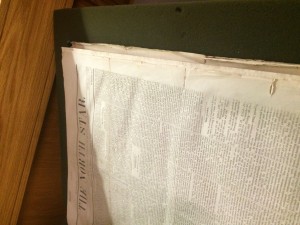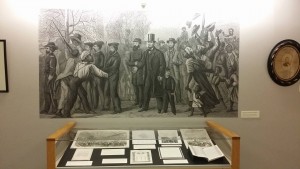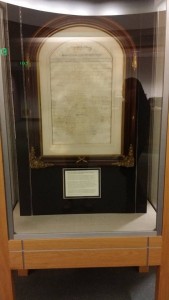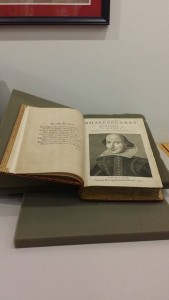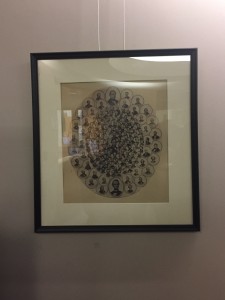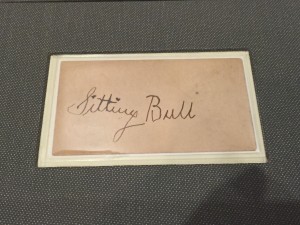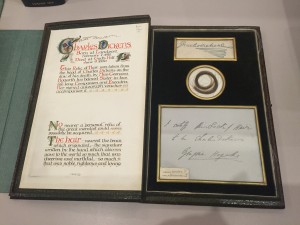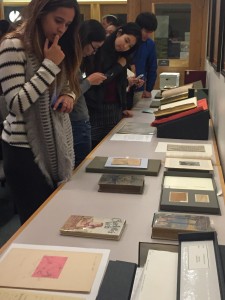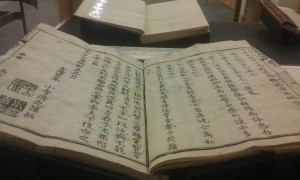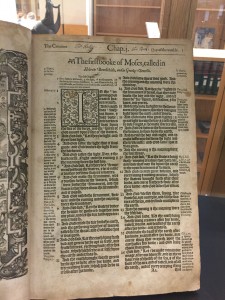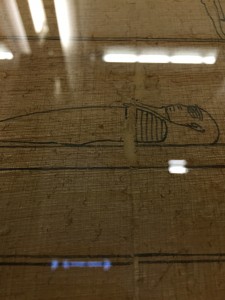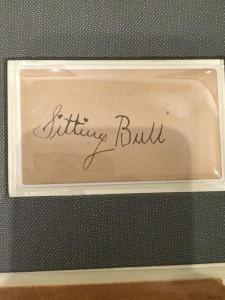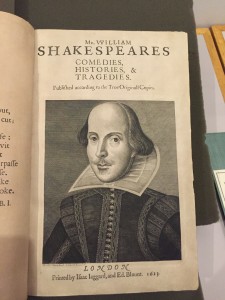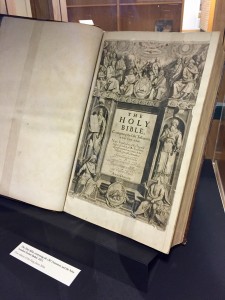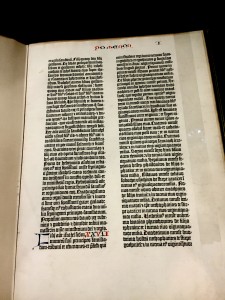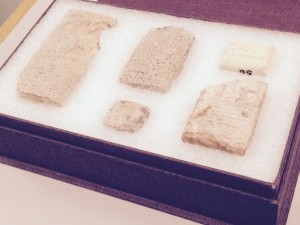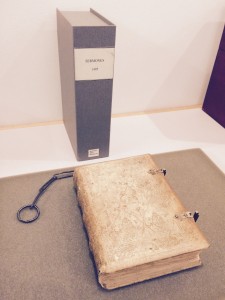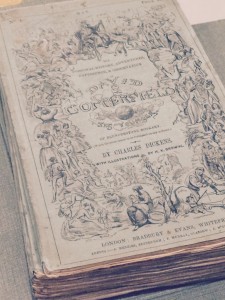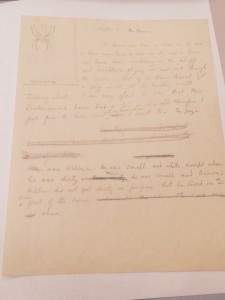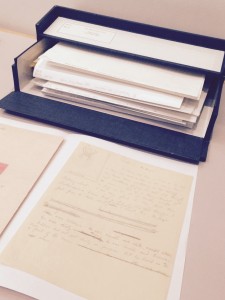Prior to October 30th I hadn’t spent much time in Kroch Library, home of the university’s Rare and Manuscript Collection. I had visited once before, briefly for a video presentation for a First-Year Writing Seminar, but didn’t have the time to view the collections, or appreciate its vast variety of unique objects.
The library’s location is telling of its significance, the three story underground complex is accessed through the adjacent Olin Library, and houses a climate-controlled vault to store the forever aging collection when it is not being exhibited, or used in research. We had the opportunity to view some of the objects that spend most of their time in the dark. Presented in front of us were cuneiform tablets, Shakespeare’s First Folio, drafts of Charlotte’s Web, and the unique signature of Sitting Bull.
I see myself returning soon to browse through the current Gods and Scholars: Studying Religion at a Secular University exhibit, which showcases religious materials Cornell has collected over the years. Though as a group we only saw it in passing, our guide made clear that though the university was founded as a nonsectarian institution, by no means was religion barred from the school, which has accepted with open arms students with a diverse range of religious beliefs for 150 years.

